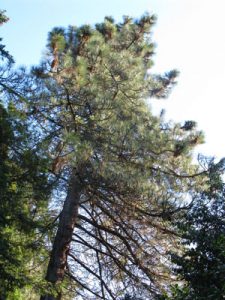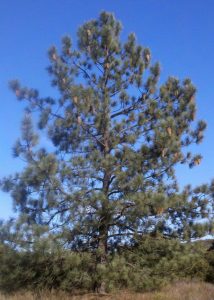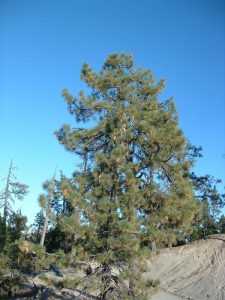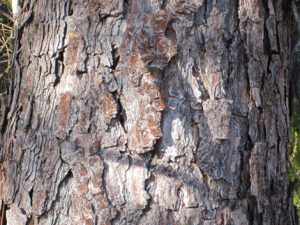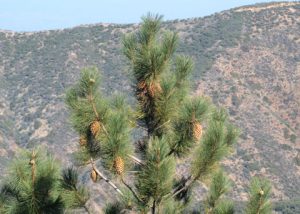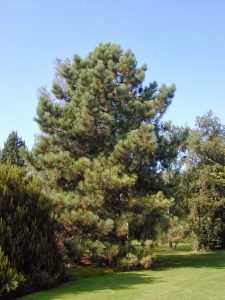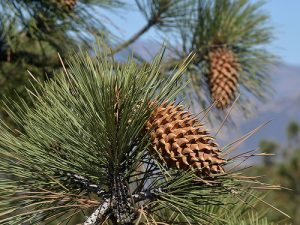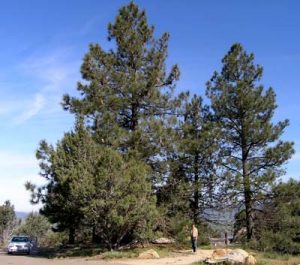Coulter Pine
The Coulter pine is an evergreen coniferous tree native to coastal mountains of southern California and northern Baja California. Named after an Irish botanist and physician Thomas Coulter, this species is also found nearby Diamond Mines Regional Preserve located in the north of Mount Diablo State Park. Jeffery pine tree is closely related with Coulter pine and they commonly share their habitat with Ponderosa pine.
Scientific Classification
| Kingdom | Plantae |
| Division | Pinophyta |
| Class | Pinopsida |
| Order | Pinales |
| Genus | Pinus |
| Subgenus | Pinus |
| Scientific Name | Pinus coulteri |
Quick Information
| Other Names | Big-Cone Pine, Nut Pine, California Coulter Pine, Pitch Pine |
| Identification | Size – 33 to 79 ft (10-24 m) Trunk Diameter: 3.3ft (1m) Leaves (Needles): Glaucous grayish green needle-like leaves arranged in bundles of three, 15-30 cm (5.9-11.8 inch)long and stout, 2 mm (0.079 inches) thick Cones: Large spiny cones, 20-40 cm (7.9-15.7 inch)long and weighs 2-5 kg (4.4-11.0 lbs) Seeds: Large brown seeds, 8 inches diameter Bark: Dark gray to black, deeply rugged with scaly ridges |
| Distribution/ Range | From Contra county in California, going southwards through the Coastal, Transverse and Peninsular ranges up to the Mexican border |
| Habitat | Found at elevations of 500-7000 feet on steep south facing slopes |
| Hardiness | Up to 8 |
| Growth Rate | Rapid, can grow up to 10 feet per year |
| Lifespan | Long life (about 100 years) |
| Growing Conditions | Summer Conditions: Dry with occasional thunderstorms Winter Conditions: Infrequent rainfall Rainfall: Requires 35-60 inches of rainfall annually Sunlight: Tolerant to full sun Soil: Well-drained acidic soil with moisture requirements varying between moist and dry. Medium texture, gravelly or loamy |
| Disease & Pests | Diseases – Root rot, dieback, blister rust, blight, canker Pests – Pinewood nematode, scale, pine needle miner, pine weevil, bark beetles |
| Breeding System | Monoecious |
| Seed Development | Seedling development is best in mineral soil in open areas |
| Seed Production | Pollination: May and June Cone Ripening: August and September in the second year after pollination Maturity: Slowly over several years Seed Dispersal: October through November |
| Wildlife value | White-headed female woodpeckers of the southern race feed on insects on the tree’s lower trunk while males widely feed on cones; western gray squirrels use its seed as a source of food; black-tailed deer sometimes graze the young trees |
| Uses | Fuelwood, also as an ornamental tree for decoration |
| IUCN Conservation Status | Near Threatened |
Interesting Facts
- Coulter pine’s cone is the largest and heaviest pine cone in the world that can weigh up to 10 pounds or more.
- The pine cones killed old time loggers if it fell on their head and hence the loggers nicknamed the cone as “Widow Maker”.
Published on February 6th 2017 by Bony Palchaudhuri under Pine.
Article was last reviewed on 5th December 2024.


